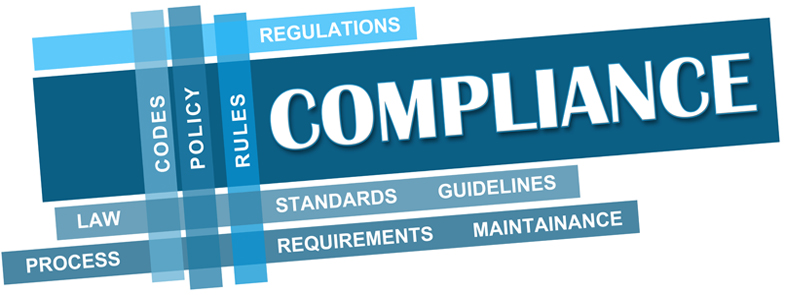Is your business complying with global data privacy laws? Get clear on international privacy rules with help from this guide
Editor’s note: This chapter is excerpted from chapter 11 of Identity Management: A Business Perspective (MC Press, 2017).
Privacy legislation across Westernized countries differs widely. It seems that there are three broad stages through which such legislation processes:
- First generation—privacy statements are published by governments with constraints on government departments and agencies to adhere to the principles.
- Second generation—privacy legislation is enacted that obligates commercial organizations to adhere to the legislation but without the stipulation of significant legal penalty.
- Third generation—privacy legislation is well defined, and clearly indicates the letter and spirit of the law, with significant and enforceable penalty.
A subjective view of the status of privacy legislation in some Western geographies is as follows:
United States
There is no single all-encompassing privacy legislation in the US. The basis for legislation is the Fourth Amendment of the Constitution, which gives citizens the right to be free of unwarranted search or seizure, and the Fourteenth Amendment, which affords a general right to privacy. While there is correlation between the Constitution and specific industry regulation, in the US the legislative “teeth” are ensconced in either specific state legislation or industry-specific regulation.
At the federal level, specific rights are spelled out in various industry-specific legislation, such as SOX and GLBA, both of which are focused on the financial sector; FERPA in the education sector; and HIPAA in health care.
At the state level, Article 1 of the California Constitution stipulates that privacy is an inalienable right. In Florida, similar legislation is in place with Article 1 restricting government intervention in a person’s life. Montana specifically references privacy as a right in Article 2 of its constitution.
There are some specific privacy issues addressed in state legislation, such as the California Reader Privacy Act and the Washington State protection of text messaging. Search without a warrant is expressly prohibited.
At this time, a subjective scoring of US legislation would be Generation 1.5. It is unlikely that an action against violation of privacy would succeed unless a deliberate and specific law violation could be proven.
Europe
The European General Data Protection Regulation (GDPR) represents the world’s “best practice” privacy legislation and can be considered Generation 3 legislation: actionable and possessing teeth. It achieves two things:
- Centralization of 28 different privacy regulatory environments into one, which simplifies adherence to privacy legislation for companies operating in Europe.
- Providing “teeth”—significant, enforceable penalties—to the legislation, which are generally missing in other jurisdictions.
The legislation means that organizations that collect identity data must ensure that good security practices are in place, that an evaluation of the data being stored on persons is understood and appropriate, and that good records management is established and maintained. These are all desirable outcomes; the existence of a big stick is secondary. Given that the stick exists, it makes little sense for companies to focus on maximizing sales and minimizing costs in order to drive profit, without expending appropriate effort on avoiding privacy legislation violation.
The legislation provides EU citizens better access to, and control of, their identity data being kept by European legal entities. It means that most companies will need to undertake some operational and system changes to provide this access and to accommodate instances in which a person’s view of their identity data, and the company’s view, diverge.
Items of note are:
- PII must be treated appropriately, which means that its confidentiality must be protected with processes in place to prevent access to the data and the equipment on which it is stored.
- The network on which personal data is communicated must have protection in place to resist malicious attacks and avoid inadvertent release of information. The availability, authenticity, integrity, and confidentiality of stored or transmitted personal data must be protected to a defined level of confidence.
- A person who is the subject of a data record must be able to evaluate and potentially contest a decision that has been made on the basis of a data record, even if the determination is machine-generated.
It is likely that the European GDPR legislation will become the model for future privacy legislation, particularly in jurisdictions with trade arrangements with Europe. It significantly informed the Safe Harbors replacement guidelines in the drafting of the EU-US Privacy Shield principles.
China
China has made nascent steps in regulating personal data. The Constitution, as adopted by the Fifth National People’s Congress in 1982, does address basic protection of people’s data by state employees with punishment of up to three years in jail for any violation.
While the Constitution does not explicitly define personal information, it can be a “secret” (i.e., information not normally made available). The Telecom and Internet Users Personal Data Protection Regulation defines personal information as
“Users’ names, dates of birth, identity card number, address, telephone number, account number, password and other information with which the identity of the user can be distinguished independently or in combination with other information, as well as the time, and place of the user using the service and other information.”
Telecom operators must keep such information secure and abide by the “principles of legality, propriety, and necessity.”
From a Western perspective, privacy protection in China is subjectively evaluated at Gen 1.0.
Singapore
Singapore was an early adopter of data protection regulation with the Personal Data Protection Commission established to administer the Personal Data Protection Act 2012 (PDPA).
The act stipulates that consent must be obtained before personal data is collected and used. It is incumbent on companies to ensure that customers or clients are told how their information is to be used so that they can give “informed” consent.
Singapore legislation aims to balance the needs of organizations against the needs of individuals. It relies on the “reasonableness test”: what would a reasonable person do in a specific situation? While this is practical, it does introduce a level of subjectivity in any legal action that an aggrieved person might bring. The PDPA is considered to be at a Gen 2.5 level.
Hong Kong
Hong Kong was an early adopter of privacy regulation, when it initially released the Personal Data Ordinance in 1995, two years before the handover to China.
The ordinance comprises six principles that govern the collection, use, and retention of personal data; data security; openness to data subjects; and correction processes. Data is defined quite broadly to include information that “directly or indirectly” relates to the identity of a living person.
While the 2011 amendment tightened regulation regarding corporate use of customer’s data, particularly in regard to direct marketing campaigns, and added a process whereby aggrieved persons can access legal assistance in meritorious cases, the legislation can only be considered Gen 2.0. Compensation levels for aggrieved parties are quite low, the ordinance favors legal interpretation that should not be difficult for a lawyer to argue, and there is a growing political influence in Hong Kong in which privacy is low on the agenda. Hong Kong is possibly at Gen 2.0.
Australia
The situation in Australia changed in 2014 when the Privacy Act amendment (2012) came into force. The amendment extended the Act to include restrictions on direct marketing, access by individuals to their data records, and stringent rules regarding correction of data. Even if an organization disagrees with a user’s contention that data is in error, the organization must provide a written reason for their disagreement and must annotate the person’s record in their data store to indicate that it has been contested.
A major shortcoming of the previous legislation was corrected by giving the Commissioner the ability to initiate action in the event of a violation of privacy legislation—in other words, there’s no need to wait for a complaint to be lodged.
Australia’s privacy legislation can be considered Gen 2.5.

























 More than ever, there is a demand for IT to deliver innovation. Your IBM i has been an essential part of your business operations for years. However, your organization may struggle to maintain the current system and implement new projects. The thousands of customers we've worked with and surveyed state that expectations regarding the digital footprint and vision of the company are not aligned with the current IT environment.
More than ever, there is a demand for IT to deliver innovation. Your IBM i has been an essential part of your business operations for years. However, your organization may struggle to maintain the current system and implement new projects. The thousands of customers we've worked with and surveyed state that expectations regarding the digital footprint and vision of the company are not aligned with the current IT environment. TRY the one package that solves all your document design and printing challenges on all your platforms. Produce bar code labels, electronic forms, ad hoc reports, and RFID tags – without programming! MarkMagic is the only document design and print solution that combines report writing, WYSIWYG label and forms design, and conditional printing in one integrated product. Make sure your data survives when catastrophe hits. Request your trial now! Request Now.
TRY the one package that solves all your document design and printing challenges on all your platforms. Produce bar code labels, electronic forms, ad hoc reports, and RFID tags – without programming! MarkMagic is the only document design and print solution that combines report writing, WYSIWYG label and forms design, and conditional printing in one integrated product. Make sure your data survives when catastrophe hits. Request your trial now! Request Now. Forms of ransomware has been around for over 30 years, and with more and more organizations suffering attacks each year, it continues to endure. What has made ransomware such a durable threat and what is the best way to combat it? In order to prevent ransomware, organizations must first understand how it works.
Forms of ransomware has been around for over 30 years, and with more and more organizations suffering attacks each year, it continues to endure. What has made ransomware such a durable threat and what is the best way to combat it? In order to prevent ransomware, organizations must first understand how it works. Disaster protection is vital to every business. Yet, it often consists of patched together procedures that are prone to error. From automatic backups to data encryption to media management, Robot automates the routine (yet often complex) tasks of iSeries backup and recovery, saving you time and money and making the process safer and more reliable. Automate your backups with the Robot Backup and Recovery Solution. Key features include:
Disaster protection is vital to every business. Yet, it often consists of patched together procedures that are prone to error. From automatic backups to data encryption to media management, Robot automates the routine (yet often complex) tasks of iSeries backup and recovery, saving you time and money and making the process safer and more reliable. Automate your backups with the Robot Backup and Recovery Solution. Key features include: Business users want new applications now. Market and regulatory pressures require faster application updates and delivery into production. Your IBM i developers may be approaching retirement, and you see no sure way to fill their positions with experienced developers. In addition, you may be caught between maintaining your existing applications and the uncertainty of moving to something new.
Business users want new applications now. Market and regulatory pressures require faster application updates and delivery into production. Your IBM i developers may be approaching retirement, and you see no sure way to fill their positions with experienced developers. In addition, you may be caught between maintaining your existing applications and the uncertainty of moving to something new. IT managers hoping to find new IBM i talent are discovering that the pool of experienced RPG programmers and operators or administrators with intimate knowledge of the operating system and the applications that run on it is small. This begs the question: How will you manage the platform that supports such a big part of your business? This guide offers strategies and software suggestions to help you plan IT staffing and resources and smooth the transition after your AS/400 talent retires. Read on to learn:
IT managers hoping to find new IBM i talent are discovering that the pool of experienced RPG programmers and operators or administrators with intimate knowledge of the operating system and the applications that run on it is small. This begs the question: How will you manage the platform that supports such a big part of your business? This guide offers strategies and software suggestions to help you plan IT staffing and resources and smooth the transition after your AS/400 talent retires. Read on to learn:
LATEST COMMENTS
MC Press Online